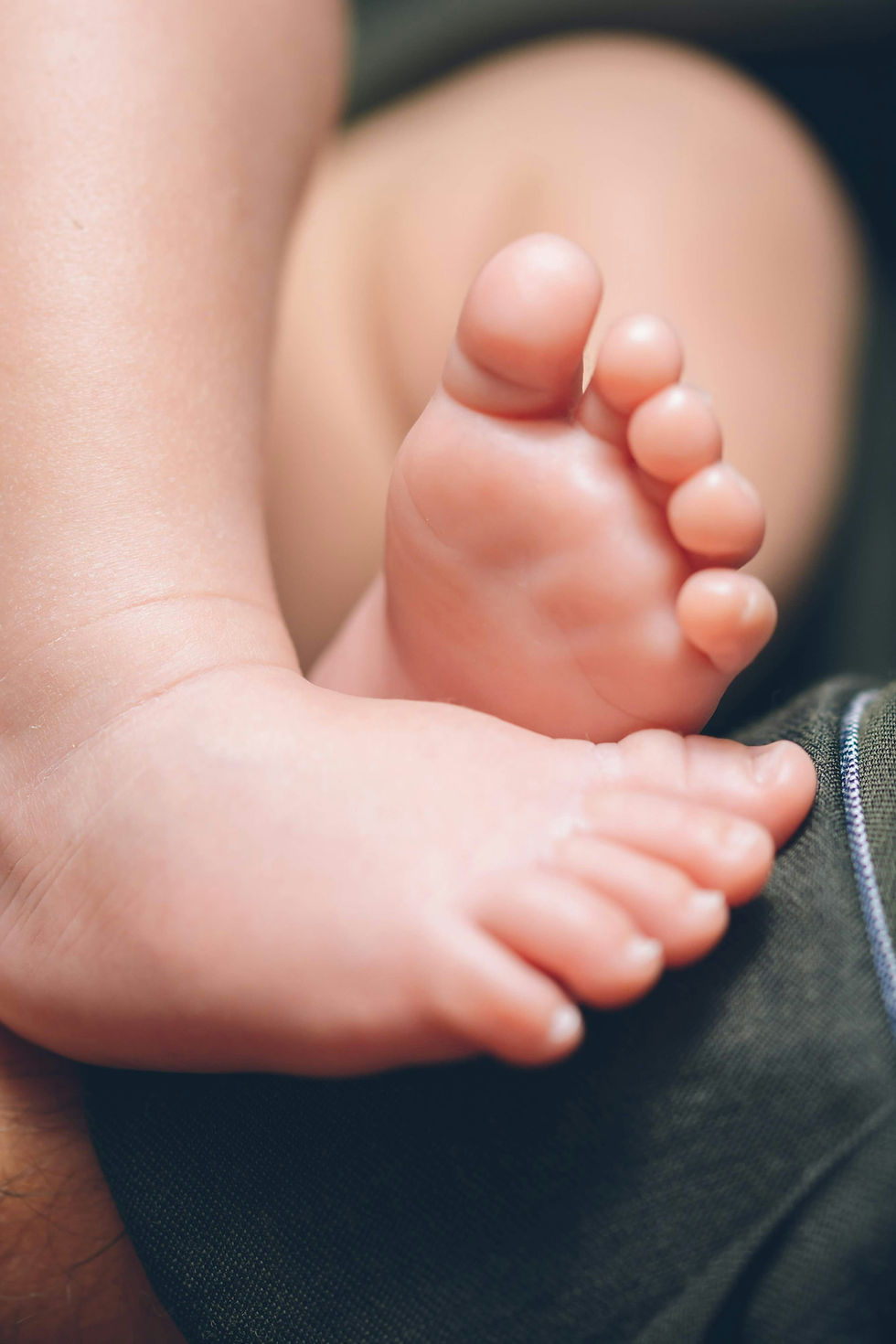Bunions
- Sam Chetwood

- Jan 25, 2023
- 3 min read
Updated: Jan 27, 2023
They don’t look good and can be painful and debilitating. So what exactly are they? How do they develop? And what can be done to prevent and treat them?
The medical term for a bunion is Hallax Valgus, with hallax referring to the big toe. A bunion forms when the big toe joint becomes misaligned, the big toe starts to move inwards towards the other toes, creating a bony protrusion where the joint sticks out.

Once a bunion forms it can get progressively worse as ligaments weaken and are not able to hold the bones in the correct position. This movement of the big toe can create further problems as it encroaches on the other toes and affects the mobility and flexibility of the foot.
Symptoms of bunions can be soreness, a burning sensation, redness, stiffness, swelling or numbness around the big toe joint. The body’s reaction to a bunion forming is to protect the area with a fluid-filled sac, called a bursa. If this becomes swollen and painful, it’s called bursitis.
So is it true that bunions are hereditary? To a certain extent yes, you can be genetically predisposed to bunions. There are certain foot shapes that are more prone to the condition, however, even if there is a history of bunions in your family, you will not necessarily develop bunions yourself, particularly if you take care to choose your footwear wisely!
People with flat feet, lack of joint flexibility in the feet, pronation or a walking pattern that causes the big toe joint to be overloaded are at greater risk of developing bunions.
Over 30% of the population develop bunions, most are women over the age of 45 living in developed countries. The primary cause being footwear with a tight, restrictive toe box, the area at the front of shoes, squeezing the toes together. High heels are particularly notorious, as gravity pushes toes further into, what are often, tight, tapering toe boxes.
During pregnancy women’s bodies release hormones to loosen the ligaments, helping our bodies adapt to the growing baby. This, combined with carrying extra weight, puts increased pressure on our feet, potentially leading to changes in shape and size and being more prone to damage from ill-fitting shoes.
While it is not common for children to develop bunions, wearing the wrong shape and size of shoes, particularly shoes that are too small or tight, can damage or weaken the feet, laying the groundwork for bunions to develop in the future.
To function effectively your toes need room to splay and wriggle within your shoes.
The big toe plays a critical role in shock absorption, balance and propulsion, if this joint lacks flexibility, is misaligned or its movement is restricted, this will impact your walking pattern and body alignment. The more you walk barefoot or in well-fitted, flat-soled footwear with room around your toes, the stronger and fitter your feet will become.
So what can you do if you have bunions or think you are developing one? First of all, choose your shoes carefully, making sure there is ample room around your toes! Avoid shoes that are pointed or tapered at the toe, or feel like they are restricting the movement of your toes.
Many people who have bunions do not suffer significant pain, so no intervention is required.
If you do experience pain or swelling this can be treated with ice packs, topical analgesic, ibuprofen, bunion pads to protect the area or a foot soak, cool for swelling / warm to relieve joint stiffness.
Toe spacers, foot stretches and exercises using resistance bands, to help position the toes correctly and strengthen the muscles of the feet can help prevent bunions developing in the first instance, relieve symptoms or stop them becoming worse.
If you do suffer significant pain from bunions, then surgery, a bunionectomy, might be advised. While this will address the problem, it will mean being off your feet for about 6 weeks and there’s no guarantee that the bunion won’t reoccur. As with so many things, prevention is preferable to cure!




Comments